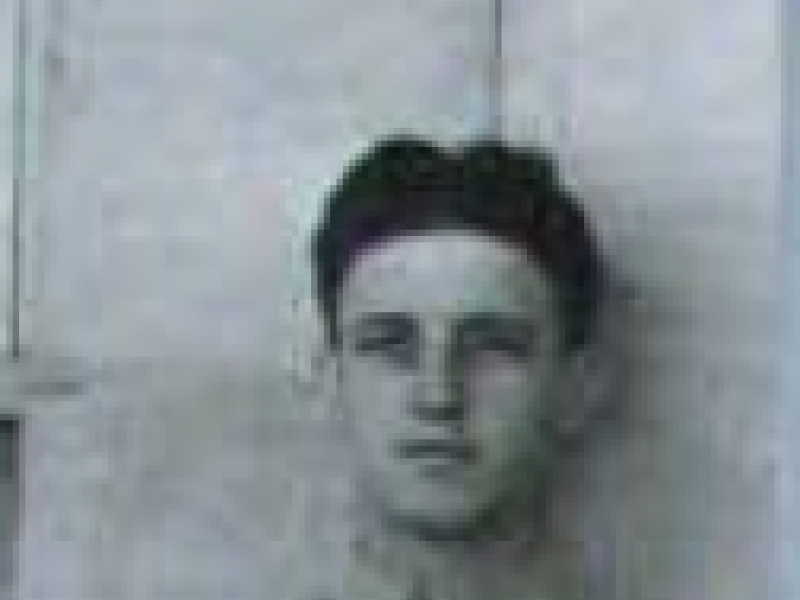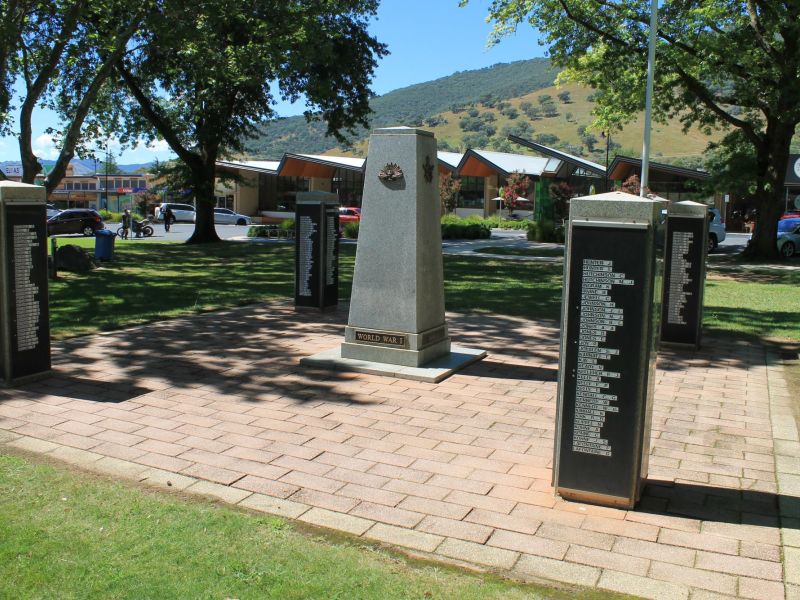Jospeh Gipson Butler
Joe was born on the 27th of April 1919 at Tallangatta in the north-east of Victoria. He was the eldest of three children to Benjamin Gipson and Alice Josephine (née McWaters) Butler of Tallangatta. Ben’s first wife, Daisy Ann Braidwood, had passed away in 1915 leaving him with four children, although three more children had died earlier. Ben and Josephine married in 1917.
In 1921, Joe’s sister, Thelma, was born and another sister, Mavis, was born two years later in 1924. All three children attended the school at Tallangatta and in 1932 Joe was awarded the gold medal for the most popular boy. All through his childhood he displayed a keen interest in planes and making models. It came to no surprise then that when he came to enlist it was the RAAF for him.
Joe had previously had two jobs before he decided to enlist in the RAAF. The first was as a motor mechanic. The second had been the assistant operator for two years at Butlers Gaiety Hall in Tallangatta, which happened to be owned and operated by his father.
On the 4th Day of December 1940, Joe stepped aboard the No.13 RAAF Mobile Recruiting Centre, Recruiting Train at Tallangatta railway station and enlisted in the RAAF. The recruiting trains were the idea of the RAAF and two were used during the period of 1940 to 1942. As Joe entered the inquiry room he would have been provided with literature and could ask questions to the aircraft men on hand. In the next room, an NCO was available to help him complete the enlistment forms. Next, he passed through into the office where his clerical work was completed. In the second carriage a medical officer and assistants put Joe through an 80 minute medical examination. The final carriage was where the officers on board interviewed him. Afterwards, he was sworn in and officially became Aircraftman Joseph Butler, Service Number 408820.
Joe’s first posting was No 1 ITS (Initial Training School) at Somers, near Westernport Bay, in Victoria. As well as basic training, ITS was designed to screen the candidates into the mustering, or roles, they would be suited to in the RAAF. Joe was clearly seen as a WAG (Wireless Operator/Air Gunner) as his second posting was to Ballarat where he became part of WAGS Course 16 on the 24th of July 1941. After ten months of training he was off to No. 1 BAGS (Bombing and Air Gunnery School) at Evans Head on the far north coast of NSW. Whilst here, Joe was provided with more extensive bombing and gunnery training. On the 5th of March 1942, Joe graduated and received his A/G Badge.
Over the next few months he moved through No.s 6 and 7 Squadrons before finally being posted to No. 2 Squadron, based in Darwin, on the 9th of August 1942. Shortly after his arrival, the squadron was moved to Batchelor aerodrome in NT. The operational tasks for the squadron included reconnaissance, attacking enemy shipping or positions, and conducting aerial and resupply for elements of Sparrow Force that were fighting on Timor. For this work the Squadron was awarded the US Presidential Unit Citation for “outstanding performance of duty in action”.
On the 23rd of March 1943, a confidential report on Joe’s progress in the RAAF was written. Two and a half weeks prior to the report he had qualified for his flying badge (wings) and the writer, Wing Commander R. H. Moran commanding officer of No. 2 Squadron, recommended that Joe be given a commission to become an officer. The report states that as a WAG (Wireless Operator/Air Gunner), Joe had flown 476 hours, with 360 of those hours being in the last six months. It goes on to say that Joe was a capable and confident type, possessing a cheerful disposition. He had a good character with the qualities required of a leader. On the 1st day of April, Joe was promoted to Pilot Officer.
Less than one month later, on April the 20th, Joe was part of a crew (A16-197) listed to conduct an armed reconnaissance patrol over New Guinea with another Hudson (A16-183). Tragedy struck just minutes after the two aircraft had taken off.
“CONFIRMATORY MEMORANDUM
CASUALTIES HUDSON AIRCRAFT A16-183 AND A16-197
PILOTS F/O K.R.MILLS (405637) AND F/O K.H. DANIEL 9402852, NO. 2 SQUADRON, DARWIN, N.T.
Further to my signals M963 and M344 dated the 21st. April, 1943, the following details supplied by No. 2 Squadron are submitted in accordance with A.F.C. 15/5/2, para .5) : -
2. (1) Hudson aircraft A16-197 and A16-183 were detailed to carry out an armed reconnaissance of TIMOKA, NEW GUINEA, from MILLINGIMBI on the morning of the 20th April, 1943. The aircraft were to proceed in formation. A16-197 took off at 0610 hours and A16-183 took off approximately 4 minutes later. Several loud explosions were heard shortly after 0615 hours. The only eye witness was a Fijian missionary stationed at MILLINGIMBI. A copy of his statement to the Investigating Officer is attached.
(2) No proof of the cause is available but from the location of various parts of the aircraft it is considered they must have collided in mid air. As no definite information is available the Report of the Investigating Officer F/LT GREENWOOD of No. 31 Squadron is attached.
(3) Attention is drawn to the Report of 60859 LAC. SANKEY A., the A.D.F. Operator on duty. The fact that both the aircraft disappeared off the screen at the same time seems to bear out the assumption that the aircraft collided…
(5) Personnel were buried as follows:-
At MIILINGIMBI MISSION CEMETERY, on 21st April, 1943
F/O K.R.MILLS (405637), F/O N.E. JOHN (409551), No. 411904 SGT. HADLEY H.H.K., One unidentified body.
On RABUMA ISLAND, on 22nd April, 1943
F/O/ K.E. DANIEL (402852), F/O J. LAWS (412979), No. 401636 SGT. GROVE, W.J.H., No 404946 SGT BARNES, J.L., No. 408820 SGT. BUTLER, J.G., One unidentified body.”
Joe’s body was remains were exhumed from Rabuma Island and re-interred in the Adelaide River War Cemetery, located 116 kilometres south of Darwin.
Joe is remembered on the Australian War Memorial Roll of Honour, the No 2 Squadron RAAF Roll of Honour, and the Tallangatta RSL War Memorial. For his service, he was awarded the 1939-45 Star, the Pacific Star, US Presidential Unit Citation, the Defence Medal, the War Medal 1939-1945 and the Australian Service Medal 1939-1945.

 Stephen Learmonth
Stephen Learmonth